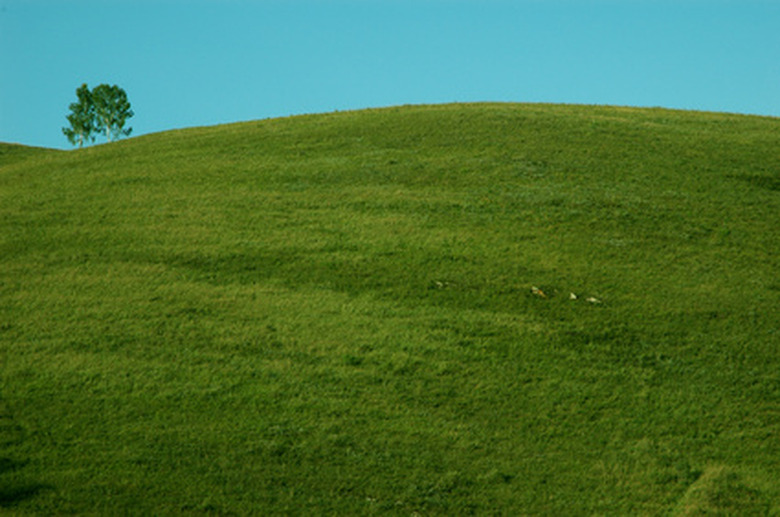How To Plant Grass On A Slope Hill
Things Needed
- Rototiller
- Garden rake
- Lawn roller
- Grass seed
- Broadcast spreader
- Mesh erosion control mat
- Garden staples
- Lawn sprinklers
- Garden hose
Establishing grass on a slope is crucial to prevent erosion of the underlying soil. However, getting grass to take hold and grow on a slope can be slightly challenging. Heavy rains and winds shortly after seeding can create havoc and wash the seeds away before they have a chance to germinate and take root. If proper preparations are made when the seed is planted, the chance of erosion can be significantly reduced and you will have a much better chance of establishing grass on a slope.
Step 1
Rototill the soil on the slope to loosen the top 2 to 3 inches of soil. Remove sticks, stones and other debris.
Step 2
Rake the soil to smooth out any lumps and bumps. Firm the soil by filling a lawn roller with water and rolling the entire area.
- Establishing grass on a slope is crucial to prevent erosion of the underlying soil.
- However, getting grass to take hold and grow on a slope can be slightly challenging.
Step 3
Seed the entire area with the recommended amount of seed as indicated on the packaging. Use a broadcast spreader to spread the seed if you are seeding a large area on the slope.
Step 4
Rake the entire area gently to cover the seeds with 1/8-inch to 1/4-inch of soil.
Step 5
Cover the entire slope with a mesh erosion control mat. Secure it to the soil with garden staples. This mat will keep the seeds and soil in place. The grass will germinate through the openings in the mesh. It also will biodegrade into the soil so removal is not needed.
- Seed the entire area with the recommended amount of seed as indicated on the packaging.
- Rake the entire area gently to cover the seeds with 1/8-inch to 1/4-inch of soil.
Step 6
Water the seeds 2 to 3 times per day for 5 to 10 minutes per watering to keep the seedbed moist. Back down on watering to once a day for 10 to 15 minutes once the grass seed has germinated.
Step 7
Move to your regular watering schedule once the grass is 2 inches high. A typical schedule should include 1 inch of water per week over one or two separate waterings. This will enable the roots of the grass to grow deep.
Tip
The best time to seed grass is the late summer or early fall. Warm soil temperatures coupled with a less-intense sun will provide the best germination rates.
Warning
If you notice your soil staying soggy between watering, cut back on the duration or frequency of the watering. Soggy soil will significantly cut back on grass seed germination rates.
